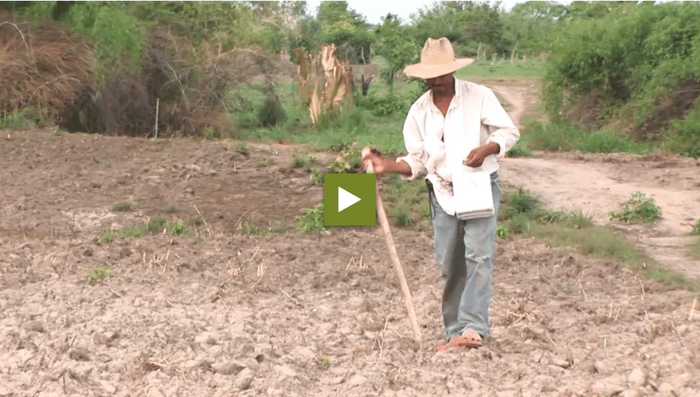After ploughing, the soil often seems broken and can be attacked by the sun or wind. The more ploughing, the more damage.
A lot of soil vanishes because of rain and wind. Before ploughing the soil is usually covered with plant remains which are protecting the field from loosening soil. If these plant remains compost, they are good for the soil and function as fertilizer. Soil which hasn‘t been ploughed, often is dryer.
Minimum tillage
To protect the soil, you should not burn something on the field before ploughing. If you have to many plant remains to be able to work, you can chop them with a machete.
For minimum tillage you can use the tractor a bit. It is cheaper to once work with a disc harrow, then having to plough several times. Another possibility for minimum tillage is to use a sub soiler. It is heavy and breaks into the soil, without turning it. It just looses the soil.
Zero tillage
Zero tillage means that the soil isn‘t ploughed at all. You just put the plant remains in lines and plant rows between them. Therefore, you can work with a planting stick. You should always keep the same distances and amount of seeds as you would have used with ploughing.
When you don‘t plough you will have more weeds, especially in the first year. Therefore, it is often important to control the herbicides in the first 25 days. After this, the maize is able to protect itself.
Minimum tillage and zero tillage cause better results. In the third year you will recognize that the soil is more fertile and doesn‘t look eroded.
Every 5 years, the soil becomes hard and should be ploughed. If cattle live on your field, you plough to loose the soil as well.



















